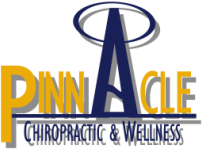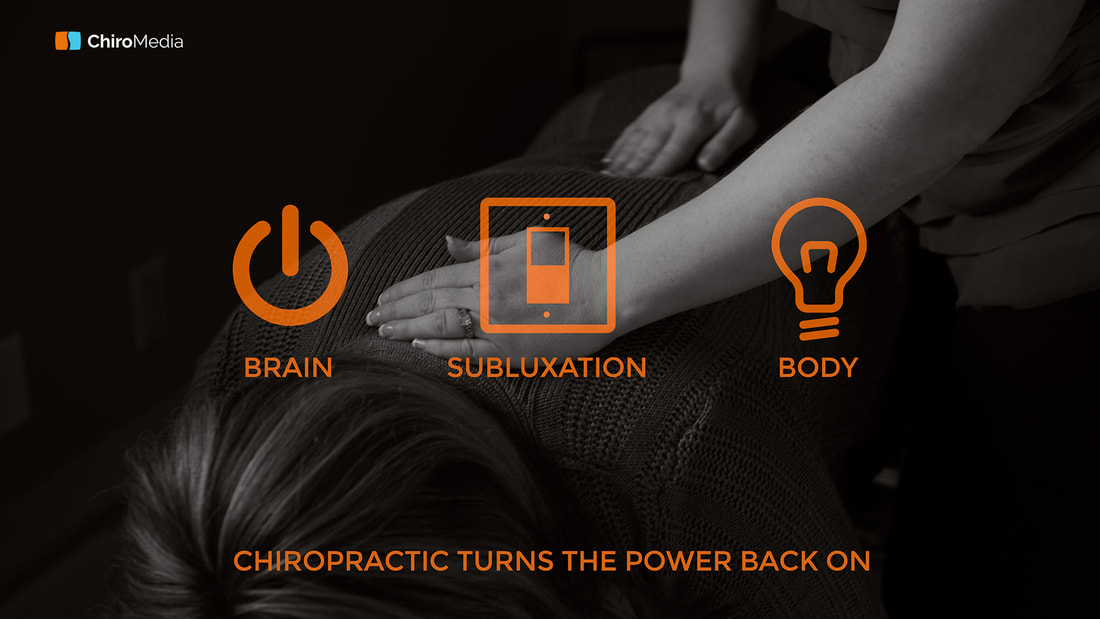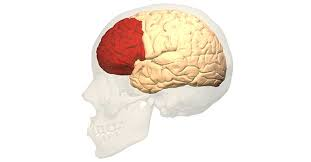|
Headaches are one of the most common symptoms that motivate people to come into our clinic. When evaluating a patient with headaches, it's critical to look at the cervical spine! A significant portion of both tension headaches and migraines are "cervicogenic" in nature, meaning they start in the neck! Due to stress, desk/phone posture, sleeping habits, etc., most people have nerve and muscle tension in their neck to some degree. However, that doesn't always mean neck pain! In many cases the nerves that are irritated innervate the head and result in headaches, without causing much neck pain at all! Below is a great example of a client who's headaches resolved after addressing the nerve tension in his neck. If you are experiencing headaches, schedule an evaluation, and let's help you get to the bottom of it!
4 Comments
Your body only works because it is sending and receiving messages to and from your brain! If your brain and your body lose connection, it's lights out! Subluxations (misalignments or fixations) in your spine can put tension on your nerves, altering the messages being sent between your body and brain. Chiropractic corrects those subluxations and reduces nerve tension in your spine. The result is improved communication between your brain and body! Power ON!
"My Chiropractic journey began in the Spring of 2019 after a fall left me unable to move my neck. Dr. Kathleen has been adjusting me ever since! I have never felt better! I used the referral gift card for my daughter who was 1 years old at the time. She hadn’t slept through the night at that point in her life. As it turns out, she had some subluxations in her neck that needed adjusted. My daughter, now 2 years old, sleeps through the night most nights! In the fall, my then 3-year-old son, experienced great difficulty settling down to sleep. His behavior was worsening and he didn’t sleep through the night for an entire month! Dr. Kathleen has worked out issues that stem from birth. He is 4 now and sleeps so much better! Dr. Kathleen has been such a blessing to our family!" ~ Lana M.
“I came to Pinnacle with terrible back pain from a congenital problem in my lower back. Dr. Kathleen got me back on my feet right away and feeling great!
My husband also sees Dr. Korey for pain in his back due to work and neck pain from a previous car accident. He is now quickly on the road to recovery. We have just started to bring in our four-year-old son. He was premature, has Epilepsy as well as developmental delays. Just within the first visit we noticed the smallest change. We are so grateful to Pinnacle for helping our family feel great!”
Chiropractic can be your ultimate brain hack! Wait what...? That's right, research provided by Dr. Heidi Haavik and her team of neurophysiologists and chiropractors has backed up what we practicing doctors see in our clinics regularly. Getting adjusted by a chiropractor doesn't only affect your spine! It is common for chiropractic patients to report improved sleep, getting sick less often, feeling less stressed, and many other great benefits. Now we have the research that backs up why this is happening! Think of your brain as a sort of computer. In order for your computer to perform correctly, it's got to have the correct input, right? If you've got a stuck button on your keyboard, or a faulty mouse, your entire computer is going to struggle doing what you want it to do! The same thing is happening in your brain. Your spine is the source of millions of small nerve endings that create a LOT of input to your brain. They are constantly sending your brain signals to let your brain know the internal environment of your body and your spine's position. But if some of those nerves are stuck in the "on" or "off" position, your brain isn't getting the correct information. Without the correct input, your brain struggles to do it's job effectively. Dr. Haavik's research has shown that the part of the brain being most effected by these faulty signals is the Pre-frontal cortex, or the front of the brain. This part of your brain is responsible for a lot of crucial health functions, and plays a role in your immune system, sleep, emotional responses, stress responses, pain regulation, attentiveness and more! Simply put, when this part of your brain isn't functioning at it's best, there are a TON of things that are negatively affected throughout your body.
So what would make this part of your brain NOT work? And what can we do to improve it? Research suggests that the main factor affecting the pre-frontal cortex is stress. When we are stressed, mentally, emotionally, physically, or even chemically, our brain senses this stress and responds by decreasing your pre-frontal cortex, and increasing the function of your mid-brain. This is commonly known as "fight-or-flight" mode. Many people tend to be "stuck" in this mode, due to chronic stress. Over time their brain gets used to running in stress mode, and it can change the chemistry and physiology of your entire body. This is because unlike computers, our brains learn over time. Brains begin to become more efficient at running the software that they commonly use, and forget how to run the software that is not being used. Over a long period of running in stress mode, it can become your brain's new normal. Luckily there are ways to combat this, and even reverse it over time. Let's look at some of the important things you can do to improve your brain's ability to run the correct software, and improve the health of your entire body and mind! 1. Meditation/deep-breathing - Meditation and deep breathing have been show to calm your brain's stress response and facilitate relaxation. From a brain perspective, they help to strengthen your pre-frontal cortex and keep you from getting stuck in stress mode! 2. Nutrition - proper nutrition gives the brain and body the nutrients that are necessary to function normally. Nutrition is an ongoing area of study for its many benefits ranging from natural ADHD treatment to control of inflammation and cardiovascular disease. It's well known and accepted that good nutrition is a cornerstone of good health. 3. Sleep and Exercise - I consider both sleep and exercises to be vital "nutrients" for your brain. Without proper sleep and without proper exercise, your brain simply will not function at its best. The benefits of exercise have been extolled by researchers for years as one of the most effective forms of health maintenance, and disease prevention. 4. Chiropractic - Last but not least, chiropractic care! Making sure that your brain is getting the correct input ensures the best output! It is now known thanks to Dr. Haavik's research that chiropractic adjustments help to re-engage the pre-frontal cortex, helping your brain to cope with stress. Remember, you live your entire life through your brain and nervous system. Because of this intricate system of nerves, every organ in your body is connected to the one under your hat! Make sure you and your family member's computers are running at their best! It's one of the best strategies for creating health. Dr. Korey Over the past few months I've been training for a 1/2 marathon. As those of you who know me realize, I'm NOT a runner... but I have helped many athletes overcome their issues while training for competitive running events.
I'm proud to say, now I can relate even more closely with those people whom I've helped over the years. I'm the latest victim of IT-Band Syndrome. If you're unaware of what the IT-band is, or unfamiliar with IT-band syndrome (ITBS) I'll let you google it, as there is an abundance of material on the basics of it. (Go ahead, I'll wait...). In this blog I'll go into further detail on how we approach IT-band issues from a chiropractic perspective. ITBS is symptomatically displayed by pain on the outside of the knee, usually a sharp pain, burning, or sometimes a tingling. It has long been thought of as an "overuse" injury - as in, you're just over doing it. This is not what any distance runner wants to hear. While overuse is a factor, the root of the problem is a more functional one. While there are a few other causes, one of the most common and overlooked is what chiropractors refer to as "pelvic unleveling". If you did your IT band google research you know the band attaches on the top to the pelvis or "hip bone". When the pelvis is not level it stresses the IT-band and causes it to rub along the outside of the knee joint. To the right you can see a drawing and an actual radiograph of pelvic unleveling. There are a few reasons for this to occur such as pelvic misalignment, glute weakness, difference in leg length, and often a combination of those factors which has caused a compensatory pattern in the biomechanics of the runner. While there are some options that may provide symptom relief, and a temporary or partial fix, the best way to resolve the issue permanently is to address the root of the problem with a health professional who understands how to address the multiple causes of ITBS. There are obviously many reasons for knee pain, if you or someone you know is suffering from this kind of issue, call for a free consultation and Dr. Kathleen and I will provide you with solutions. The following is an excerpt from Jeff Nixon's sportsblog.com
"On February 4, 2016, ESPN will air a “30 for 30” documentary that examines the 1985 Bears and includes the remarkable recovery of Jim McMahon. A few years ago, Jim McMahon thought that he was in the early stages of dementia, but in the following video he talks about how his pain and some of his memory problems were linked to a simple alignment problem in his spinal cord. McMahon’s miracle story came about after a visit to New York chiropractor Dr. Scott Rosa. After a specialized scan in the FONAR Upright MRI, Jim was found to have significant misalignment at the base of his skull causing obstruction to the flow of his spinal fluid. McMahon received Rosa’s patented I.G.A.T. (Image Guided Atlas Treatment) which, Jim says literally saved his life. Just moments after the first cervical adjustment, McMahon said "it felt like a toilet bowel flushed and all the pain and stress went away". This occurred because the CSF (Cerebrospinal Fluid) flow went from being obstructed to flowing normally, allowing it to remove the neurotoxins and wastes that are a byproduct of brain function. This improved Jim McMahon's dementia symptoms as well his brain fog, migraines and slurred speech. “Jim McMahon suffered from Cranio-Cervical Syndrome (CCS), which was giving him his pain," said Dr. Damadian, the inventor of the FONAR Upright MRI. Cranio-Cervical Syndrome (CCS), occurs as a result of injury to the structures which connect the head to the neck. Misalignment may cause abnormal stress tension on the spinal cord and blood vessels interfering with brain function. Image Guided Atlas Treatment restores the alignment of the affected structures so the brain and nervous system can return to normal function." I show each patient prior to their first adjustment a video MRI showing cerebrospinal fluid flow before and after an adjustment. The difference is incredible. The adjustment truly affects the entire spine and nervous system when applied properly. Congratulations to Jim and his amazing recovery! Let's spread the word that quality chiropractic care can change lives for the better! Recently an article has been published in Pathways Magazine describing the benefits of Chiropractic care for children. This article focused on ear infections and demonstrated that antibiotics in medicine have been over utilized and unproductive in many cases*. The American Medical Association recommends a “watch and wait” period before antibiotics are administered. There are many reasons this is preferred. First of all the infection very likely could be a virus, in which case antibiotics, which only kill bacteria will be useless and all you get are bad side effects. Secondly, and more importantly in my humble opinion, most bacterial infections are resolved just by having a properly functioning immune system! I understand the “watch and wait” period is difficult for parents. We all want to help our children and it’s difficult to see them in pain. In light of recent studies, many are beginning to recommend you get your child in to see a Chiropractor during the “watch and wait” period to optimize the function of your child’s immune system.
The article goes on to describe the importance of a proper functioning immune system and it’s correlation with the spine, nervous system and Eustachian tube (ear canal). “Misalignment of the spinal bones can cause undue pulling on the child’s neck muscles creating tension in the Eustachian tubes. The subsequent dysfunction of these tubes to drain lymphatic fluid causes an increased risk of infection. The chiropractic adjustment aims to reduce the tension of the misalignments all throughout the body—restoring normal physiology.” The article goes on “Chiropractic adjustments do not treat the symptom or infection. They do not suppress or mask the symptom, but instead they allow the body to regain its natural state of function and health. Infections indicate an overloaded immune system. The best course of action is to support the body in regaining its balanced immune system. Treating ear infections with antibiotics can disrupt balance in the body and sometimes creates greater havoc. This leads to susceptibility to repeated infections.” This is something I’ve seen over and over again in my practice. Mom’s struggling to know what to do next, having gone through round after round of antibiotics, tubes, and yet their child suffers from reoccurring ear infections, colds and sinus infections. Finally, (too often as a last resort!) they wander into my office, in many cases the problem has been allowed to become severe, and it takes several months to a year to see proper results. The outcome depends on how long these misalignments in the spine have been present, how much of an impact they have had on the body as well as the nutrition of the child. For example, I had a 6 year old girl enter my office who had suffered from birth with ear infections. She had gone through roughly 3 rounds of antibiotics each year for the past 3-4 years. We have seen her for over a year now and she has not needed any antibiotics. Her case is a great example of the importance of balance. She was very emotional and anxiety driven. Her adjustments entailed a very gentle sustained hold to correct misalignments in her spine. In this child’s case, she was able to overcome illness as well as her anxiety levels. She is able to tolerate school and independence better, while recovering from her (less frequent) illnesses quickly. Chiropractic adjustments clear the body of any neuro-spinal interference allowing the child to grow straight, strong and smart! As the saying goes “as the twig is bent, so grows the tree.” A crooked tree has a much more difficult time functioning than a straight one, because structure affects function. Dr. Kathleen Wiemold *Article reference: Why Chiropractic Care is Being Recommended for Ear Infections, Issue #49, Family Wellness First. Author: Janaiah Von Hassel Dr. Kathleen and I work hand in hand with many other health professionals in order to reach our clients goals. When we refer our clients to local providers, they are professionals we know and trust! This may include medical physicians, neurologists, orthopedic surgeons, physical therapists, and dentists. Dentists? That's right... definitely dentists. Why would a chiropractor be working with a dentist on a case? Well the answer lies just inches in front of your cervical spine. Our clients who come to us with jaw dysfunction (TMD), migraines, or facial pain can often benefit from working with a neuromuscular dentist. A neuromuscular dentist is a specially certified dentist who works with the alignment of the jaw and its relation to the muscles and bones of the upper neck. A local neuromuscular dentist we know and trust is Dr. Mike Deldar from Deldar Dental. Dr. Mike Deldar ~ "As a neuromuscular dentist, I know the value in chiropractic care. Personally, I get adjusted periodically. An aligned body is key to your nervous system and one of the things that allows it to function properly. A misaligned body is due to a myriad of causes and issues. In many ways, a misaligned body is a multi-disciplinary issue in health care. Some chiropractors forget that working with other health professionals can help their patients maintain their adjustments and improve their current conditions. This is why it is so important to find a knowledgeable chiropractor who's goal is to improve their patients' well-being. This is why I trust and work with Dr. Korey Wiemold. He understands the value of what we can do together to help our patients who suffer from TMD (temporomandibular joint or TMJ Issues). On many occasions, my patients can benefit from chiropractic care at Pinnacle Chiropractic & Wellness. For instance, I have patients that need cervical adjustments or need to improve their posture. Chiropractic correction of these issues can help them with their TMD symptoms. At the same time, Dr. Wiemold refers his patients to us here at Deldar Dental to realign their jaws. Our orthopedic treatments allow the facial and neck muscles to relax. By re-positioning the jaw to a more physiologically correct position, the muscles no longer relapse nor feel fatigue. Dr. Wiemold and I both understand the direct relation of the lower jaw with the cervical vertebra. I enjoy working with him on our patients' cases. Together, we have succeeded in getting better results for our patients. Dr. Mike M. Deldar, DDS, FICCMO, LVI Dr. Deldar is certainly being modest in the post above. We have seen the results of his care, and it is nothing short of amazing. Many people suffer for years with chronic pain from migraines, or jaw dysfunction. There are dozens of muscles, and thousands of tiny nerve endings that depend on your jaw being in correct alignment. The results of a misaligned jaw are messages from those nerves and muscles sent directly to the brain and interpreted as pain, sometimes severe. These people can benefit tremendously from working with a neuromuscular dentist. Thank you Dr. Deldar, for providing great results to our clients! We look forward to continuing our work with you in the future. For more information about Deldar Dental, and how they can help you or your loved ones with migraines, TMD, sleep apnea and more please visit their website ~www.deldardental.com/
Do you or someone you know suffer from low back pain, IT band syndrome, hip pains or aches? Are you athlete who wants explosiveness, or a senior who wants to be able to rise, balance, and walk comfortably? If so, this short blog from Jimmy the Trainer will be the most important thing you read today!
Unfortunately the glutes are under performing in most every case of low back pain I see in our clinic. Studies show that people with low back pain have less ability to fire their glutes on command. Jimmy, your local trainer and fitness expert, breaks it down and gives some great tips for improving one of the most important muscle groups in the body. For more from Jimmy the Trainer go to www.JimmyTheTrainer.com! From daily intuitive movements to intentional exercise patterns, the glute muscles and the activation of these muscles is truly a powerhouse for the human body – a powerhouse most people don’t recognize or maximize. The dichotomy of glute activation is this: most movements rely on the glutes but few movements address the improvement of glute activation. Glute activation refers to the contraction of an important group of posterior muscles. Like all functions of the human body, glute activation relies on a plethora of muscle regions and movement patterns. To unlock the “glutes”, one must first identify the keys. The gluteal muscles, more commonly referred to as the “glutes”, are critical factors in most areas of physical performance. The glutes host a trio of important muscles; gluteus maximus, gluteus medius, and gluteus minimus. While the glutes are often overlooked as a primary muscle group, they are essential to a variety of human functions. External rotation and extension of the hips are significant movement patterns for most people, movement patterns made possible by the glutes. In a variety of ways, the hip flexors make such movement and glute activation possible. The hip flexors are a collection of muscles that, as if their name did not sufficiently indicate, support the flexion of the hips. Perhaps the most important aspect of the hip flexors is a two-muscle region called the iliopsoas, a muscular combination of the psoas major and the iliacus. As the strongest hip flexor, the iliopsoas is massively important for standing, walking, and running. Furthermore, the reasonable flexibility of the hip flexors is important for glute activation – without optimal hip flexibility, the hips will not open at their full potential and the glutes will not be activated at their full potential. As previously mentioned, a dichotomy exists in the process of glute activation. Most movements rely on the glutes – few movements engage the glutes. For example, daily actions like walking and standing up can engage the quadriceps and hamstrings; however, the average person’s glute activation during these actions is likely minimal. The important aspect of glute activation as it pertains to injury is the recovery (from injury). Research supports that the glutes are inhibited by almost every type of lower body trauma/injury – ankle sprains, pulled muscles, and even lower back pain. With that said, the intentional pursuit of glute activation becomes paramount for successful rehabilitation. To begin this pursuit of glute activation and hip flexibility, the following exercises will be a great start; Glute Bridge, Figure-4 Glute Bridge, Bird Dog, Lying Abduction (Leg Lift), Quadruped Hip Circles, Reverse Hyperextension, and Back Extension. In addition to world-class chiropractic care, a great starting point for the beginner is a simple bridge complex like the one seen in this video: click here to view the Glute Bridge Complex. ~Jimmy |
|
Pinnacle Chiropractic & Wellness
10126 Brooks School Rd, Fishers, IN 46037 (317) 288-4514 |
|




